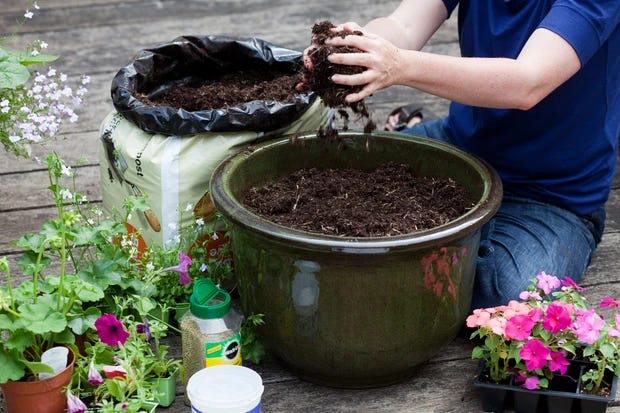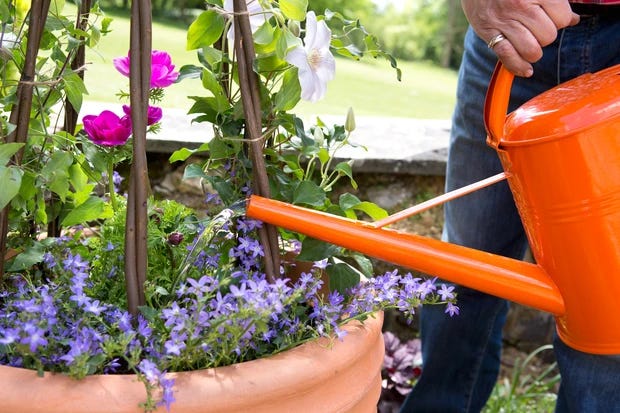Whether you have a small or large garden, or simply a patio or balcony, container gardening offers you flexibile growing opportunities. Growing plants in containers is an easy way to create instant and changeable displays right outside your back door – especially useful if you’re short on space.
Many plants can be grown in containers, from hardy bedding plants to bulbs, herbaceous plants, fruit and vegetables and even shrubs and trees. However it’s worth knowing how give your plants the best conditions possible, as container-grown plants need a little extra care than those growing in the ground.
Growing plants in containers is an easy way to create instant and changeable displays right outside your back door – especially useful if you're short on space.
Read our tips on container gardening, below.
Choose the right location
It’s important to site your containers where the plants growing in them will thrive. Plants that require a lot of sun should receive at least six hours of sunlight a day, so should be placed in a south- or west-facing location. Shade-loving plants should be grown in pots placed in shade. Ideally, choose a sheltered spot for your containers, to stop cold, drying winds harming your plants – containers places below walls and fences and hedges are good locations. If placing pots on a wall or balcony, ensure they are fixed securely.
Choose the right container
Containers come in many shapes, sizes, colors and materials. Opt for conventional plastic, terracotta or wooden pots and troughs, or be creative by recycling buckets, bathroom furniture or tins. The only rules are that your container should be large enough to provide your plants with the room they need to grow, and that they have adequate drainage.
Choose the right compost
When filling your container choose sieved home-made compost or multipurpose from the garden centre, as these are nutrient-rich, lightweight and moisture-retentive. Avoid using garden soil as this is heavy and is likely to contain weed seeds which can out-compete your plants. If growing perennials you’ll need to scrape off the top layer and replace it with fresh compost annually.
Watering
Plants growing in containers don’t have access to as much moisture as those growing in the ground, so will need watering more often than plants growing in your borders. This is particularly important on hot sunny days, when the compost can dry out within hours. In summer water plants thoroughly in the morning or evening, making sure the water soaks through to the plants’ roots. Place containers near to a water source to make light work of watering.
Feeding
Plants in pots have less access to nutrients than those in the ground, so will need additional feeding. Use slow-release fertilisers or add liquid feed to your watering can. Plants should be fed around every fortnight during the growing season.






